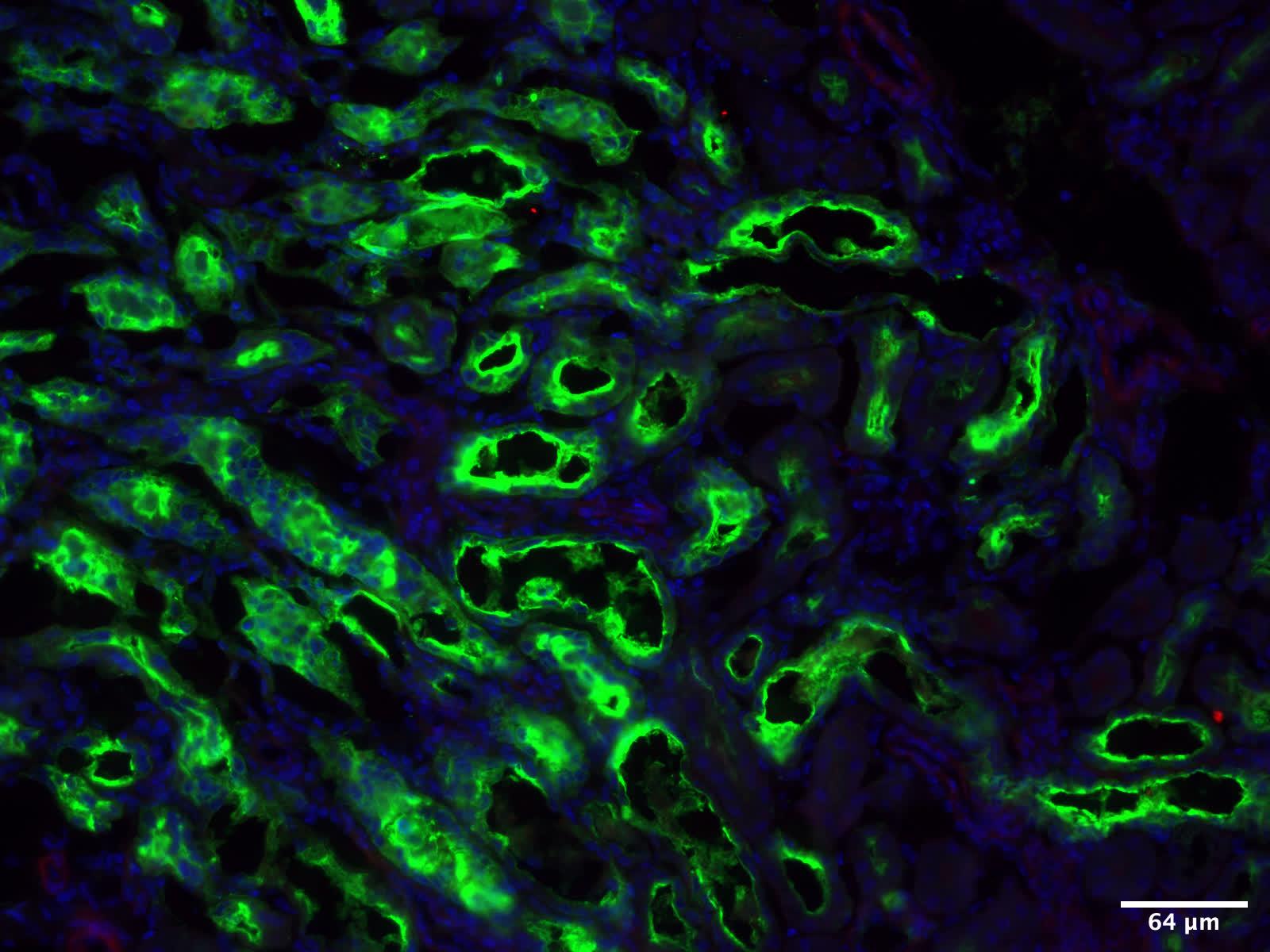The Gunaratnam Lab Research
Here in The Gunaratnam Lab we apply basic and translational research to decipher the role of Kidney Injury Molcule-1 in acute kidney injury (AKI), renal transplantation and Renal Cell Carcinoma (RCC).
Kidney Injury
Acute kidney injury (AKI) is a serious syndrome that encompasses a spectrum of disorders that lead to an abrupt decline in kidney function. AKI most often results from severe or prolonged hypo-perfusion (ischemia) or nephrotoxicant-induced injury. It affects about 5-10% of all hospitalized patients and is associated with increased mortality risk. Unfortunately, there has been no improvement in mortality rates with current therapies. AKI is characterized by tubular cell death and inflammation. The efficient removal of apoptotic cells by phagocytes is essential for resolution of inflammation and tissue repair. Phagocytes that ingest apoptotic cells actively suppress local inflammation while preventing the release of immunogenic contents from apoptotic cells that can undergo secondary necrosis. Kidney injury molecule-1 (KIM-1) is cell-surface receptor for phosphatidylserine (PS), an “eat me” signal displayed on the surface of apoptotic cells and necrotic cells. KIM-1 is highly unregulated on proximal tubular epithelial cells (PTECs) after AKI and transforms surviving PTECs into phagocytes for clearance of apoptotic and necrotic cells. Our recent work proposed a protective role for KIM-1 in ischemic AKI. We showed that Kim-1-/- mice sustained more severe and prolonged kidney dysfunction, tissue damage and mortality after bilateral renal artery clamping AKI leads to systemic inflammation and distant organ injury. Whether the relationship between AKI and mortality is causal is unclear, but emerging experimental evidence suggests that AKI directly contributes to systemic inflammation and multi-organ (e.g. cardiac, lung, etc.…) dysfunction. An exciting question is whether systemic inflammation and/or distant effects caused by AKI directly contribute to the mortality observed clinically.
Kidney Transplantation
Kidney transplantation is the optimal treatment for patients with kidney failure. However, the lifespan of transplanted kidneys is limited by several factors including the quality of the donor organ (e.g. age) and tissue damage sustained during the organ transplantation process. The major causes of tissue damage are from injury due to reduced blood flow and oxygen to the organ and the immune system (i.e. rejection response). When the organ is deprived of oxygen, this leads to the death of kidney cells and leakage of inflammatory contents from the dying cells into the surrounding tissue. Immune cells responding to these contents further propagate tissue damage and can even enhance the rejection process against the kidney. Our lab and others have characterized Kidney Injury Molecule (KIM-1) as a protein which aids in the rapid removal of dying cells and promoting repair after kidney injury. The role of KIM-1 in human transplantation is not well understood. Our project aims address this knowledge gap using a mouse model that mimics human kidney transplantation. Our work will uncover the detailed mechanisms underlying the role of KIM-1 in kidney injury and repair during transplantation, and may uncover new therapeutic strategies that enhance the lifespan of the transplanted kidneys.
Renal Cell Carcinoma
Renal Cell Carcinoma (RCC) is one of the most common and lethal kinds of kidney cancer. Approximately, one-third of all patients present with metastases at initial diagnoses. Although RCC is known to elicit a strong host immune response, the cancer has been deemed resistant to both immunotherapy and chemotherapy treatments. Unraveling the genes which regulate metastasis of RCC and the mechanism(s) by which is evades the host immune system may lead to improved biomarkers which guide therapy or prognosis. The investigation using basic science could lead to therapies which could improve the overall survival of patients with RCC. Over 90% of RCC tumors from patients aberrantly express a cell surface glycoprotein known as Kidney Injury Molecule-1 (KIM-1) to varying extents. Our lab uses basic science and translational techniques to elucidate the pathophysiological role of KIM-1 in RCC, investigating both the role of KIM-1 in host immune evasion, as well as its role in metastasis.

